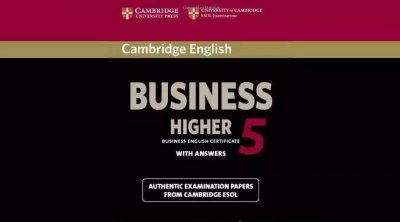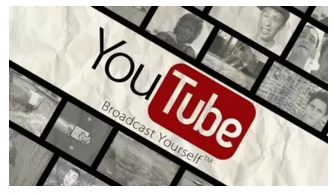2018年7月7日雅思考试题目预测(2)
6
T
PARAGRAPH 5 confirms that the advent of heavy traffic meant that roads were inadequate:
the ever-increasing use of motor vehicles threatened to break up roads built to nineteenth-century standards...
7
NG
Paragraph 7 details the development of high speed roads but does not mention the use or non-use of speed restrictions.
8
Romans
PARAGRAPH 8
The development by the Romans of the arched bridge …
9
stone
PARAGRAPH 8
Most were built of stone
10
light
PARAGRAPH 10
Such bridges are nevertheless
light
11
longest
PARAGRAPH 10
The 1998 Akashi Kaikyo Bridge in Japan has a span of 1,991 metres, which is the longest to date.
12
steel
PARAGRAPH 11
Cantilever bridges ... exploit the potential of steel construction
13
stable
PARAGRAPH 11
Although the suspension bridge can span a wider gap, the cantilever is relatively stable...
Passage 2
14
C
PARAGRAPHB
Homo neanderthalensis lived in Europe and parts of Asia, as did Homo sapiens.
15
B
PARAGRAPH B
... interlopers in the form of Homo sapiens, who were spreading out from Africa.
16
A
PARAGRAPH B
... the arrival of Homo sapiens in a region was always quickly followed by the disappearance of Neanderthals.
17
C
PARAGRAPH E tells us that the two species, i.e. Homo neanderthalensis and Homo sapiens were inter-fertile.
18
A
PARAGRAPH E says that …no Neanderthal mitochondrial DNA has turned up in modern humans.
19
D
PARAGRAPH D explains the change in thinking about the relationship between the two species:
Previous genetic analysis...had suggested no interbreeding between Neanderthals and modern humans. The new ... examination ... shows this conclusion is wrong.
20
B
The final sentence of PARAGRAPH B explains that we do not yet know why the arrival of Homo sapiens in a region was always quickly followed by the disappearance of Neanderthals.
21
G
PARAGRAPH G says that Neanderthals and modern humans share the same version of a gene which is involved in the ability to speak.
22
A
PARAGRAPH A sets out the groundbreaking nature of the analysis by Svante Paabo and his colleagues.
23
E
PARAGRAPH E notes that it is strange, that no Neanderthal mitochondrial DNA has turned up in modern humans, since the usual pattern of invasion in historical times was for the invaders, males to mate with the invadeds females.,
24
inter
breeding
/crossbreeding
PARAGRAPH E
... even after several hundred thousand years of separation, the two species were inter-fertile. .
25
shape/
growth
PARAGRAPH g
The newly evolved regions of DNA also include a gene called RUNX2, which controls bone growth. That may account for differences in the shape of the skull
26
little-finger
bone
paragraph g
Another of his teams has revealed the existence of a hitherto unsuspected species of human, using mitochondrial DNA found in a little-finger bone.,
Passage 3
27
Y
PARAGRAPH 1 tells us that the first commercial fishermen cast their nets and hooks over a thousand years ago.
28
Y
PARAGRAPH 2 supports the statement by stating that, in general, we view the oceans as something which should be open to all.
29
N
PARAGRAPH 2 contradicts the statement when it says that ... most marine protected areas allow some fishing to continue.,
30
NG
The passage focuses on ways of protecting supplies of fish; it does not discuss the option of limiting consumer demand.
31
N
PARAGRAPH 4 makes it clear that destruction of the variety of mammals has been much easier than their recovery will be to manage.
32
D
The writer means that pleas from fisheries managers for more time to make their models work, delay action which might lead to real success.
33
C
None of the statements A, B or D is supported by the passage, but in PARAGRAPH 5 the writer says:
.The Common Fisheries Policy exemplifies the worst pitfalls: flawed models … Which agrees with statement C.
34
A
In PARAGRAPH 6 the writer says:
We can go a long way to avoiding this catastrophic mistake with simple common-sense management thus supporting statement A. Statements B, C and D are contradicted in the passage.
35
B
PARAGRAPH 1
by the nineteenth century it was still felt, justifiably, that the plentiful resources of the sea were ... beyond the reach of fishing, and so there was little need to restrict fishing or
create protected areas/
36
F
PARAGRAPH 1
1 …modern fishing technologies leave fish no place to hide
37
D
paragraph 1
/... the only refuges from fishing are those we deliberately create/ PARAGRAPH 5
creating marine reserves ... has been tried and refined for the last fifty years.7
38
I
paragraph 1
..the sea trails far behind the land in terms of the area and the quality of protection given. .
39
H
PARAGRAPH 5
To some people, creating marine reserves is an admission of failure. .
40
C
PARAGRAPH 6
If we dont break out of this cycle of failure,
【听力】
Section 1 & Section 2重点场景(生活类):日常生活,旅游导览,找工作,制作流程,报名申请,旅游住宿。
Section 3 & Section 4重点场景(学术类):师生讨论,学术讲座,作业讨论,论文选题, 动植物研究。
Section 1
Questions 1-2
Complete the notes below.
Write NO MORE THAN ONE WORD for each answer.
Advice on plumbers and decorators
Example
Make sure the company is: local
Pont call a plumber during the 1 _____
Look at trade website: 2
Questions 3-10
Complete the table below.
Write NO MORE THAN ONE WORD for each answer.
Name
Positive points
Negative points
Peake’s Plumbing
Pleasant and friendly Give 3 _____ information Good quality work
• Always 4 _____
John Damerol
Plumbing Services
5 _____ than other companies
Reliable Not very polite Tends to be
6 _____
Simonson Plasterers
Able to do lots of different 7 _____
• More 8 _____ than other companies
H.L. Plastering
Reliable. Also able to do
9 _____
• Prefers not to use long 10 _____
Section 2
Questions 11-20
Choose the correct answer, A, B or C.
Museum work placement
11 On Monday, what will be the students working day?
A 9.00 a.m. - 5.00 p.m.
B 8.45 a.m. - 5.00 p.m.
C 9.00 a.m. - 4.45 p.m.
12 While working in the museum, students are encouraged to wear
A formal clothing such as a suit.
B a cap with the museum logo.
C their own casual clothes.
13 If students are ill or going to be late, they must inform
A the museum receptionist.
B their museum supervisor.
C their school placement tutor.
14 The most popular task whilst on work placement is usually
A making presentations in local primary schools.
B talking to elderly people in care homes.
C conducting workshops in the museum.
15 The best form of preparation before starting their work placement is to read
A the history of the museum on the website.
B the museum regulations and safety guidance.
C notes made by previous work placement students.
Questions 16-20
Label the plan below.
Write the correct letter, A-l, next to questions 16-20
Where in the museum are the following places?
16 Sign-in office _____
17 Gallery 1 _____
18 Key box _____
19 Kitchen area _____
20 Staff noticeboard _____
Section 3
Questions 21-26
What is the tutors opinion of the following company projects?
Choose FIVE answers from the box, and write the correct letter, A-H, next to questions 21-26.
Tutor’s opinion
A It would be very rewarding for the student.
B It is too ambitious.
C It would be difficult to evaluate.
D It wouldn’t be sufficiently challenging.
E It would involve extra costs.
F It is beyond the student’s current ability.
G It is already being done by another student.
H It would probably have the greatest impact on the company.
Company projects
21 Customer database _____
22 Online sales catalogue _____
23 Payroll _____
24 Stock inventory _____
25 Internal security _____
26 Customer services _____
Questions 27-30
Questions 27-28
Choose TWO letters, A-E.
Which TWO problems do Sam and the tutor identify concerning group assignments?
A Personal relationships.
B Cultural differences.
C Division of labour.
D Group leadership.
E Group size.
Questions 29-30
Choose TWO letters, A-E.
Which TWO problems does Sam identify concerning the lecturers?
A Punctuality.
B Organisation.
C Accessibility.
D Helpfulness.
E Teaching materials.
Section 4
Questions 31-40
Complete the notes below.
Write ONE WORD ONLY for each answer.
The Tawny Owl
Most 31 _____ owl species in UK
Strongly nocturnal
Habitat
Mainly lives in 32 _____, but can also be seen in urban areas. e.g. parks.
Adaptations
• Short wings and 33 _____ for navigation
• drown and 34 _____ feathers, for camouflage
• Large eyes (more effective than those of 35 _____ ), for good night vision
• Very good spatial 36 _____ for predicting where prey might be found
• Excellent 37 _____, for locating prey from a perch
Diet






 2016改革后专八真题:
2016改革后专八真题: 2016改革后专八真题:
2016改革后专八真题: 2017年5月六级口语考
2017年5月六级口语考 2017年上半年CATTI二
2017年上半年CATTI二 CATTI考试常见问题解
CATTI考试常见问题解 2017年12月四级写作预
2017年12月四级写作预 2017专四词汇必备:高
2017专四词汇必备:高 四六级阅读:2017年12
四六级阅读:2017年12 这样预读选项,你的听
这样预读选项,你的听 四六级作文经典句型谚
四六级作文经典句型谚 四级英语新闻听力突破
四级英语新闻听力突破 雅思基础差?快来!我
雅思基础差?快来!我 上海2016年12月份英语
上海2016年12月份英语 备考四级:30天背完四
备考四级:30天背完四 留学必备! 十个热门A
留学必备! 十个热门A 广东2016年12月份英语
广东2016年12月份英语







